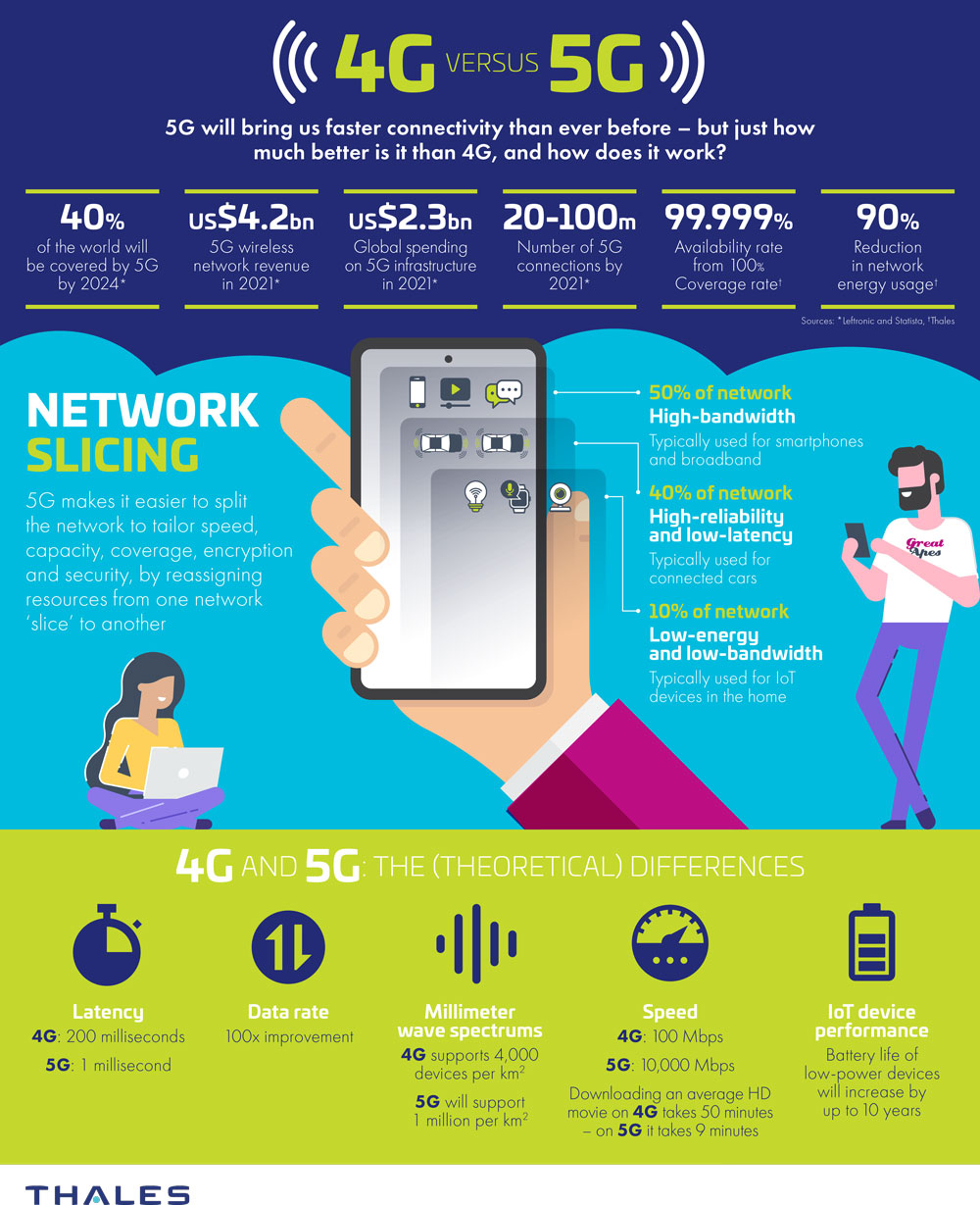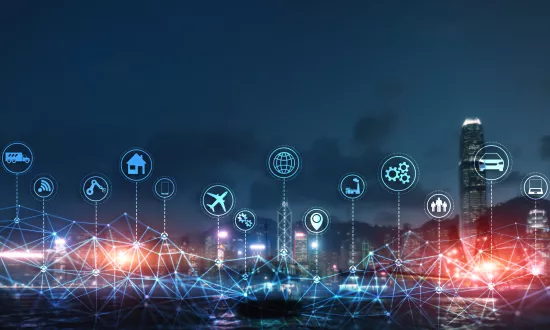5G vs 4G: what’s the difference?
Estimated reading time: 10 minutes
Last updated May 2023
As forecast by GSMA Intelligence at the start of 2022, the mobile industry celebrated an incredible milestone as the first billion 5G connections were made by the end of 2022.
So why is there so much excitement about 5G technology? And why is it such a significant upgrade on 4G?
It comes down to connectivity, and the vast commercial opportunity made available by super-fast, low latency, widely available mobile networks.
Connectivity has certainly evolved since it first emerged in the 1990s. It’s gone from merely providing access to the internet to powering complex infrastructures.
This has led to the creation of transformational new services.
For example, urban planners are now creating smart cities. They are using Internet of Things (IoT) devices to connect everything from smartphones, homes and cars to traffic systems and even garbage collection vehicles.
Obviously, these vast and complex networks require high network performance levels. They demand a certain level of speed, latency and reach.
To date, service providers have had to choose from established wireless technologies such as Bluetooth, Wi-Fi, 3G and 4G LTE. But all of these options come with performance trade-offs.
Things are different with 5G.
5G up to 100 times faster than 4G
In the right conditions 5G download speeds can reach 10 gigabits per second. That’s up to 100 times faster than 4G – and certainly the level of performance needed for an increasingly connected society.
Yet even today, with 5G technology still at the early stage of its evolution, speeds are lightning fast.
For example, AT&T’s 5G Plus network achieves typical download speeds of 75 Mbps, which will download a movie in just 49 seconds. On a 4G network, this takes 50 minutes on average.
Of course, connectivity requirements vary based on what the network is being used for. Streaming a film to a person’s smartphone and remotely controlling a connected car, for example, demand different levels of speed, latency and security.
To support the most disruptive new use cases for fast connectivity, enterprises will need more control over their network speed and security.
4G cannot deliver this. 5G can. This is thanks to ‘network slicing’.
5G and network slicing
‘Standalone’ 5G represents a big shift from all previous cellular networks. Its infrastructure is cloud-based and virtual. Many of standalone 5G’s key network elements are based on software, rather than hardware.
Because of this, telcos can create customised slices – effectively autonomous private networks – that they can offer to enterprises. The owner of any slice can tailor its speed, capacity, coverage, encryption and security to its unique requirements.
Think of the 5G network like a block of flats where each apartment has a specific key so that only authorized people can enter. Access to these private networks can be controlled by a specific slice SIM (sSIM) which can be stored in any 5G SIM.
Latency: 5G is the winner
5G’s superior performance is not just a question of speed. There’s also latency – the delay between the sending of information and the corresponding response.
For 4G, latency is on average 200 milliseconds, not far off the 250 milliseconds it takes for humans to react to visual stimuli.
However, the 5G latency rate is significantly lower: at just 1 millisecond.
This extraordinary leap will be the key to developing new services and devices.
Take connected cars for example. Here, latency defines the gap between clicking “stop” and the moment the remotely driven vehicle starts braking. Low latency is what will make so-called Vehicle-to-Everything services workable.
But there are many more verticals in which low latency could have a huge impact. These include virtual-reality gaming, remote surgical operations and translation services.
In other words, IoT and 5G make a perfect combination.
5G also means more security and regulations
With increased opportunity comes increased risk. 5G will see the wider deployment of private mobile networks and increased network access on the part of third-party suppliers, all of which increase the number of opportunities for hackers.
For these reasons, the deployment of 5G must come with the correct security levels to enable trust.
This is why regulators are calling for a dialogue between vendors, network operators, and regulators to find and implement solutions to mitigate these risks.
In the EU, for example, stakeholders will be affected by the ePrivacy Regulation (ePR). It was intended to take effect alongside the EU GDPR (General Data Protection Regulation) in 2018.
While GDPR aims to protect personal data, the ePR focuses on privacy and the pseudonymization and encryption of personal information. As of 2022, the final text of the ePR is still to be agreed.
However, the good news is that 5G connectivity does provide an in-built level of protection to service providers. This is thanks to the 5G SIM, which encrypts and stores sensitive critical data inside a tamper-resistant Secure Element. It’s a little like a bank vault, and it’s highly impregnable.
Every previous mobile network upgrade has been mostly about faster internet. 5G is different. Yes, it will speed up connectivity for smartphone owners. But, more important, it will power transformative new services across a range of verticals. And it will couple super-fast speeds with enhanced security.
The opportunity for telcos is unprecedented.
Click here to download our infographic.



